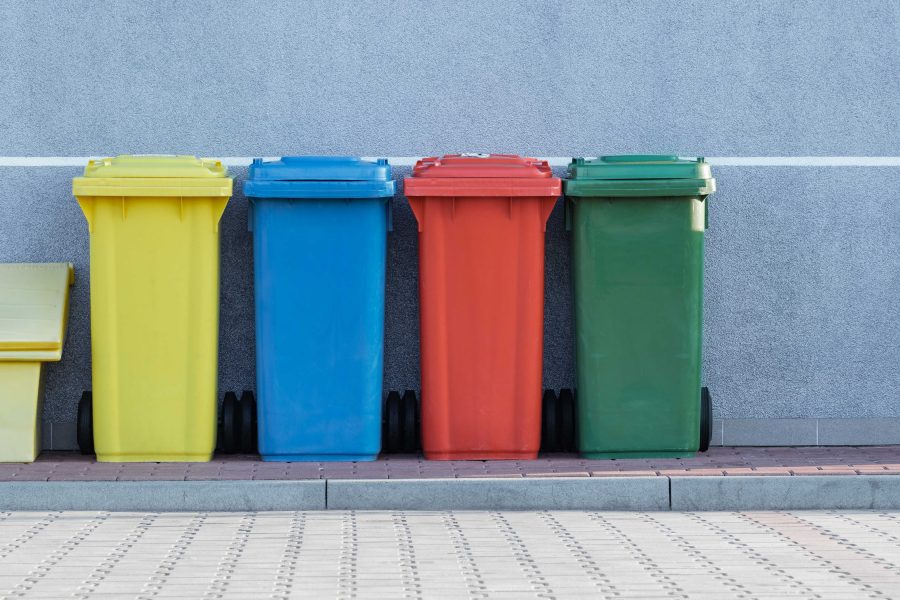How to Clean Your Bins and Wheelie Bin
Published By - 2nd April 2020
Cleaning your wheelie bin and household bins is not a task you enjoy. But it’s one that you need to do on a regular basis. So, in this article, we are going to look at the best way to clean your bins.
How to Clean your Wheelie Bin
Cleaning out a wheelie bin is extremely unpleasant, even at the best of times. Dustbins are breeding grounds for germs due to foodstuffs that start to rot as soon as they are thrown away. Couple this with a warm and moist environment and you are also creating the perfect climate for nasty bugs and maggots.

Unfortunately, the problem with bins has become worse since the council now only empty wheelie bins on a fortnightly basis. So, especially in summer, it’s vital that you wash out your bin regularly; in summer, food starts to decompose even sooner due to the warmer climate.
Cleaning your Wheelie Bin with a Pressure Washer
Cleaning out your wheelie bins has to be one of your favourite-hate tasks. However, when you use a Karcher pressure washer for the task, you will achieve brilliant results in no time at all. Just follow these simple steps;
- Remove the large pieces of dirt from your wheelie bin by using the Vario spray lance
- Spray your wheelie bin with a universal or plastic detergent
Useful Tip: When applying detergent to your bin, ensure the cap is removed and plugged correctly into your machine; this will allow you to apply detergent directly to your bin with your pressure washer. When applying detergent to your bin, set your Vario lance to its lowest pressure setting. - Leave it to work – After spraying the detergent, leave it for a couple of minutes to get to work, ensuring that the detergent has time to activate and remove dirt effectively.
- Rinse – Once again with the Vario lance, rinse your wheelie bin out. For best results, start at the top and work your way down. To ensure that water doesn’t pool up inside, put your wheelie bin on its side.
- Leave to dry – Instead of wiping it all down to dry, turn it over and let it air dry.
If you find that there are some stubborn patches of dirt that won’t shift, use a brush to agitate and to help remove it successfully.
Using a Hose Pipe to Clean your Bins
To successfully clean out your wheelie bin with a hose, lay it down on its side. This way, the innards are easily accessible. Rinse your bin out with your hose on its most powerful setting, or alternatively with a pressure washer such as Karcher. The pressure of the water will blast off sticky bits of muck as well as encrusted waste.
Whilst cleaning out your bins, you should always wear protective gloves. The mess should be emptied down the drain. To make sure you don’t clog your drain up in the process pick out any big bits and discard them separately.
Leave it to do its job for a few minutes, then rinse your bin from the top downwards. Once finished, drain your bin and leave it dry before you use it again.
If your bin is still smelly, even after you have cleaned it, you can use baking soda or bicarbonate of soda to neutralize the nasty whiff. Simply pour a small amount of either into the bottom of your bin.
Getting rid of Maggots
There’s a common saying that where there’s much there are flies. And, where you find flies, in warmer weather, you will also find maggots. So, you need to get rid of them before they spread and multiply and your problem gets out of hand.
Remove the offending maggot-ridden bin bag, spraying around the top with disinfectant or bleach. Then place the bag inside another one, tying the top as tight as possible.
To kill any maggots that may be inside your bin, pour almost boiling water over them.
Once you have done this, follow the steps we talked about above to disinfect your bin. This will destroy any remaining eggs. If your bin is a bright colour, you may find some discolouration occurs, but this is surely better than having a maggot-infested wheelie bin.
How to keep your Bins Clean
Never leave food out in your kitchen without covering it. Covering food ensures that flies can’t lay eggs on it. Deter flies as much as possible in and around the home by using fly spray or flypaper. You could also cover windows and doors with fly screens. When using fly spray, make sure there is no food around.
When discarding food packaging, rinse them first to get rid of biological substances and blood.
Before discarding fish and meat scraps, animal waste, nappies, cat litter, and bones, place them in biodegradable bags or ensure they are securely wrapped in newspaper.
Always ensure you tie the tops of all your bags tightly before putting them in your bin.
During the summer months, empty your kitchen bin more frequently than any other indoor bin. Wherever possible, try and find a cool place outdoors in the shade to store your wheelie bin.
To prevent flies from getting inside your wheelie bin, always make sure the lid is fully on. As well as preventing flies from breeding, the nasty smells will also stay trapped inside.
Make sure your bin lid is always closed. If you find that the lid won’t stay down, days before your collection is due, try recycling more of your rubbish or try to compost it. Alternatively, you can take your rubbish to the tip.
Always remember to wash your hands when you have been in contact with your bins. This prevents the spread of germs.
